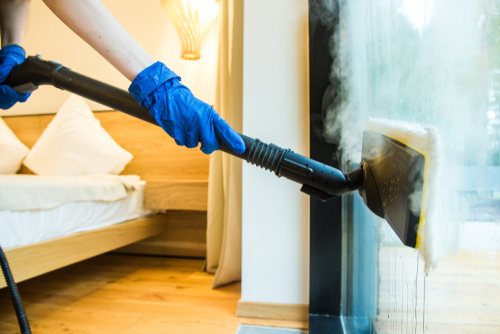
How To Clean Ceiling Fan At Home?
July 31, 2022
Tips On Cleaning Toilet With Baking Soda
September 2, 2022How to Clean and Disinfect Cutting Boards for Safe Meal Prep?
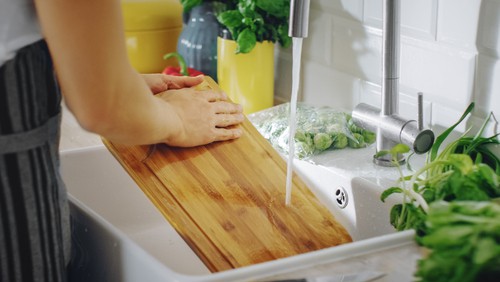
How to Clean and Disinfect Cutting Boards for Safe Meal Prep? Cutting boards are an essential tool in the kitchen, but they can also be a breeding ground for bacteria if they’re not properly cleaned and disinfected. They should be cleaned after each use and disinfected periodically to ensure food safety.
Table of Contents
ToggleHow to Clean and Disinfect Cutting Boards for Safe Meal Prep?
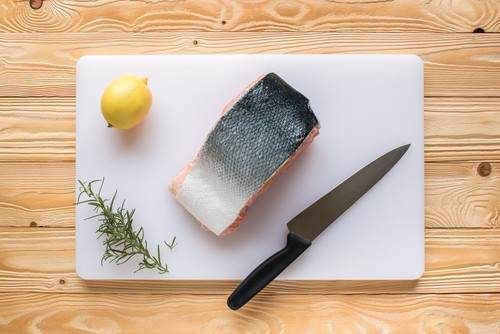
There are a few different ways to clean and disinfect cutting boards, and the method you choose will depend on your board type.
Wooden cutting boards
- Wooden cutting boards can be cleaned with hot water and soap, then disinfected with a solution of 1 tablespoon of bleach per gallon of water. Plastic and composite boards can be washed in the dishwasher or with hot water and soap, then disinfected with a solution of 1 tablespoon of bleach per gallon of water.
- Wash your cutting board with hot water and soap after each use. You can also put it in the dishwasher if it’s safe. If you’re using a wooden cutting board, don’t let it soak in water, or it will warp.
- Use a solution of 1 tablespoon of bleach per gallon of water. Be sure to rinse the board with clean water afterwards. You can also use white vinegar instead of bleach, but you’ll need to let it sit on the board for at least 10 minutes to be effective.
- Once your cutting board is dry, store it where it won’t come into contact with food. If you’re using a wooden cutting board, it’s best to store it upright, so it doesn’t warp.
Composite and plastic cutting boards.
- To clean composite and plastic cutting boards, wash them in the dishwasher or with hot water and soap. These types of boards can also be disinfected with a solution of 1 tablespoon of bleach per gallon of water.
- If you’re using a composite or plastic cutting board, you can put it in the dishwasher to clean it. If the board is large, you may need to wash it in two batches. Be sure to let the board air dry completely before storing it.
- Use a solution of 1 tablespoon of bleach per gallon of water. Be sure to rinse the board with clean water afterwards. You can also use white vinegar instead of bleach, but you’ll need to let it sit on the board for at least 10 minutes to be effective.
- Once your cutting board is dry, store it where it won’t come into contact with food. If you’re using a composite or plastic cutting board, it’s best to store it upright, so it doesn’t warp.
Stainless steel cutting boards
- To clean stainless steel cutting boards, wash them with hot water and soap. You can also put them in the dishwasher if they’re safe.
- Use a solution of 1 tablespoon of bleach per gallon of water. Be sure to rinse the board with clean water afterwards. You can also use white vinegar instead of bleach, but you’ll need to let it sit on the board for at least 10 minutes to be effective.
- Once your cutting board is dry, store it where it won’t come into contact with food. If you’re using a stainless steel cutting board, it’s best to store it upright, so it doesn’t warp.
What are the benefits of cleaning and disinfecting cutting boards?

There are several benefits to cleaning and disinfecting cutting boards, including:
- Reducing the spread of bacteria: Bacteria can quickly spread from cutting boards to other surfaces in the kitchen, which can lead to food poisoning.
- Preventing cross-contamination: Cross-contamination is when bacteria from one food item is transferred to another. This can happen if you use the same cutting board for raw meat and vegetables.
- Prolonging the life of your cutting board: Cutting boards can become worn and damaged over time, especially if they’re not properly cared for. Cleaning and disinfecting them regularly will help to prolong their life.
- Keeping your family safe: Bacteria can cause serious illness, especially in young children, the elderly, and those with weak immune systems. By cleaning and disinfecting your cutting boards, you can help to keep your family safe from bacteria.
How often should I clean and disinfect my cutting board?
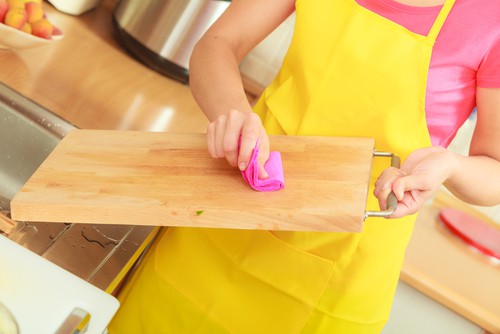
You should clean and disinfect your cutting board every time you use it. You should disinfect it afterwards if you’re using it for raw meat, poultry, or fish. It’s also a good idea to clean and disinfect your cutting boards at least once a week, even if you’re not using them.
Things to consider when cleaning and disinfecting your cutting board
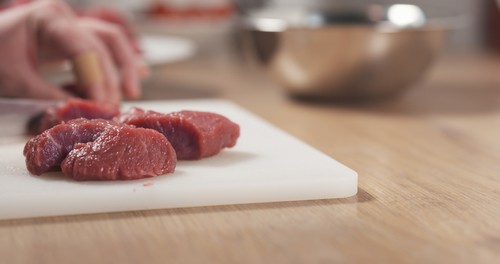
When cleaning and disinfecting your cutting board, there are a few things to keep in mind, including:
The type of cutting board.
Different types of cutting boards require different cleaning and disinfecting methods. Be sure to consult the manufacturer’s instructions before cleaning your board.
The size of the cutting board.
Large cutting boards may need to be washed in two batches, or you may need to clean them in sections.
The material of the cutting board.
Cutting boards are made from various materials, including wood, plastic, and composite. Be sure to use the appropriate cleaning and disinfecting method for your type of board.
The condition of the cutting board.
If your cutting board is damaged or worn, it may need to be replaced. Consult the manufacturer’s instructions to see if your board can be repaired or if it needs to be replaced.
Your personal preferences.
Some people prefer to clean their cutting boards with natural cleaners, while others prefer to use chemical cleaners. Choose the method that you’re most comfortable with.
How to Clean and Disinfect Cutting Boards for Safe Meal Prep –
Conclusion
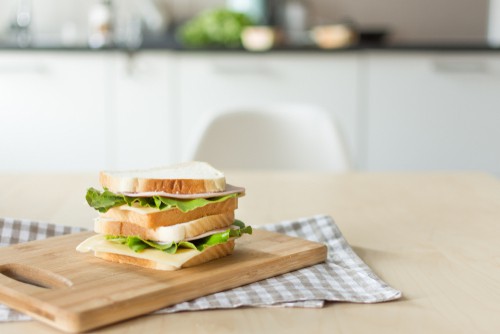
Cleaning and disinfecting your cutting board is an important part of food safety. Be sure to wash your board with hot water and soap after each use, and disinfect it with a solution of bleach and water or white vinegar. Store your cutting board in a clean, dry place to prevent the spread of bacteria.



